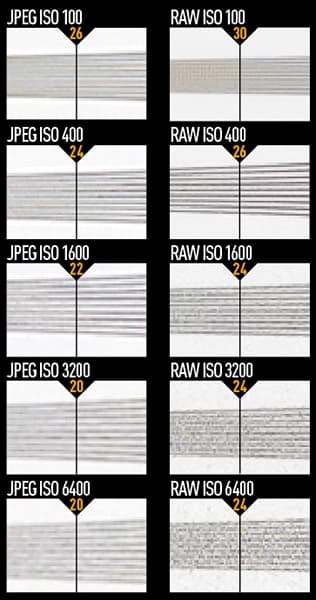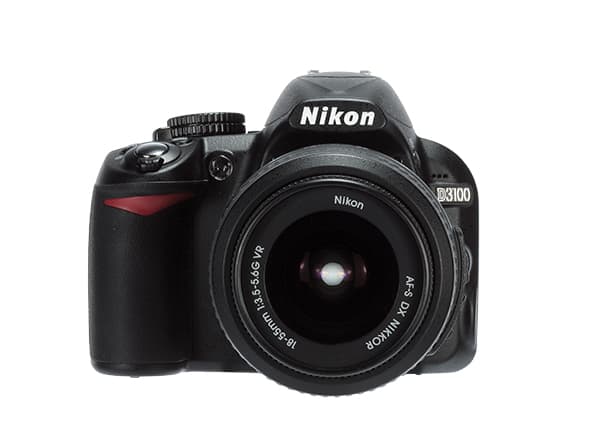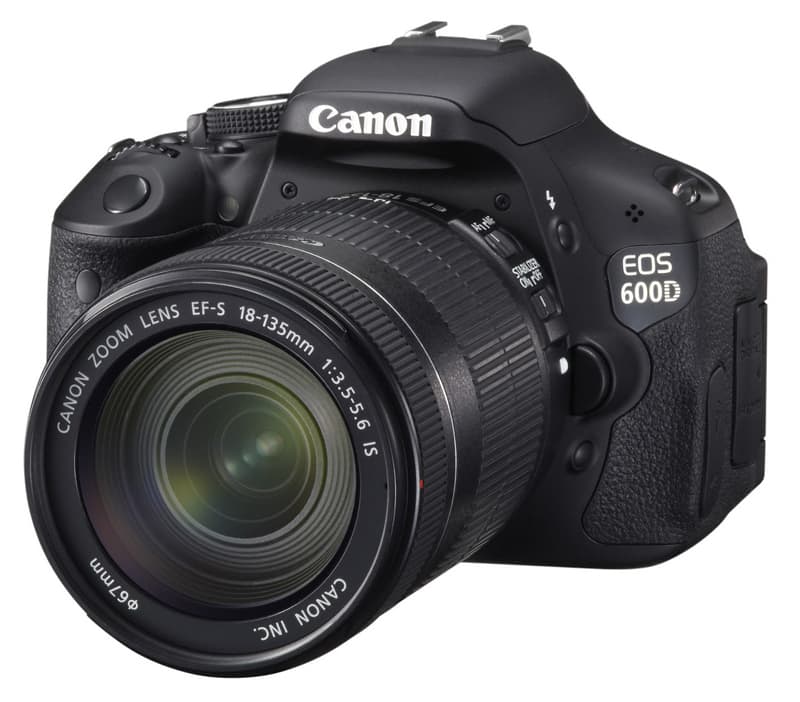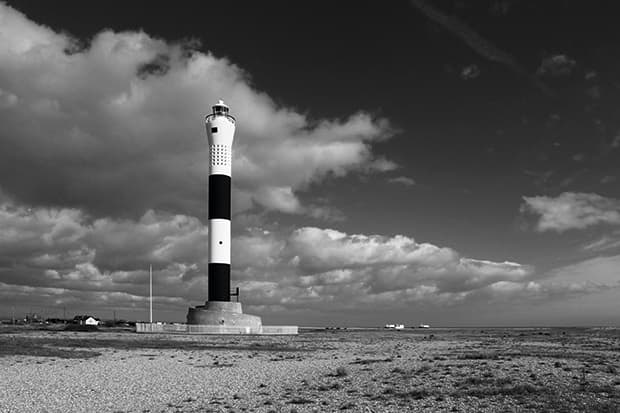Is the Canon EOS 600D a good buy? When it was released we certainly thought so. Find out how it performed in our full, detailed review, of this popular Canon DSLR.
Canon EOS 600D at a glance:
- 18-million-pixel APS-C CMOS sensor
- Articulated, 1.04-million-dot, 3in screen
- ISO 100-12,800
- Street price approx £750, much less second-hand
- New Basic+ mode
- Wireless flash control
Canon EOS 600D review – Introduction
In any competition, if you stand still your rivals are likely to overtake you, so if you want to stay ahead you’ve got to keep moving. This is why Canon has released the Canon EOS 600D just a year after it announced the EOS 550D. A few quizzical eyebrows may be raised at this because at first glance there seems to be very little difference between the two. For instance, both share the same 18-million-pixel sensor, Digic 4 image processor and maximum ISO 12,800 sensitivity.
However, such overt similarities are deceptive because the new camera has actually adopted a few features from the next model up in the range, the Canon EOS 60D, which won both the Enthusiast Camera of the Year and Product of the Year at this year’s Amateur Photographer Awards.
Among the features the Canon EOS 600D inherits from this prize-winning model are an articulated 1.04-million-dot, 3in screen, in-camera wireless flash control, a Basic+ exposure mode and creative filters. So, while there are differences in the build and handling of the 600D and 60D, in terms of their specification the two cameras are, at least on paper, remarkably similar.
Interestingly, every other three-digit EOS camera has a different resolution of 6, 8, 10, 12 and 15 million pixels in the EOS 300D, 350D, 400D, 450D and 500D respectively, so it would be logical to assume that the Canon EOS 600D should command an even greater pixel count. However, its resolution has plateaued, and remains the same as that of the EOS 550D.
Now, Canon says that for the time being the 550D is not being officially discontinued, but will remain in the EOS range with a reduced price. In light of this, I can’t help wondering whether the new features of the 600D will prove tempting enough for enthusiast photographers to buy it, rather than the less expensive 550D or better-specified 60D.
Features
As already mentioned, the Canon EOS 600D has an 18-million-pixel CMOS sensor and uses the company’s Digic 4 image processor. This produces images that measure 5184×3456 pixels and can be saved as JPEGs or 14-bit raw files. Unlike the Canon EOS 60D, the 600D does not allow you to choose the size of the JPEG file when shooting raw and JPEG simultaneously, and nor is there the option to save raw and small or medium JPEG files simultaneously, only large JPEG files. This feature is quite useful on the EOS 60D as it allows small JPEGs to be used for quick reference, therefore saving the space on the memory card that a large JPEG file would take up.
Another facet of the 60D’s specification that the 600D does not replicate is the shooting rate. The 60D shoots at up to 5.3fps for approximately 58 JPEG images or 16 raw images, while the 600D shoots at the same rate as the EOS 550D: 3.7fps for approximately 34 JPEGs or 7 raw images. The 60D also has a 1-stop faster maximum shutter speed of 1/8000sec compared to 1/4000sec on the 600D. That said, for most entry-level DSLR users, the 1/4000sec shutter speed and 3.7fps shooting rate will be perfectly adequate, as only those pursuing an interest in sports or wildlife photography will find the 60D’s extra speed advantageous.
For a long time EOS-system users required the Canon ST-E2 Speedlite Transmitter to control external flashguns. However, the company introduced in-camera wireless flash control with the EOS 7D and this has since appeared in the 60D and now the 600D. This is great news for creative photographers, particularly with two new Canon Speedlites – the 320EX and the 270EX II – expected to go on sale in the next few weeks.
Canon has really designed the 600D so that photographers can be as creative as possible, and it includes a number of features designed for changing the look of images in-camera. The first is an option to change the aspect ratio from the standard 3:2 to 16:9 or 1:1. The effect can be previewed when using live view and the images created have a maximum size of 5184×2912 pixels (approx 15.1 million pixels) and 3456×3456 pixels (approx 11 million pixels).
Like Olympus, Canon has introduced a range of Creative Filters, including grainy black and white, soft focus, toy camera and fish-eye, each of which can be applied to captured images during playback. Both the creative filters and the image aspect ratio adjustments are both found in the 60D, but not in the 550D.
Of the few ‘physical’ changes from the Canon EOS 550D, the screen is the most obvious. While it is of the same specification as that used in the 550D and 60D, it is a vari-angle screen like that of the 60D. Another feature bequeathed by this model to the 600D is the ability to give each image a star rating, which will help you sort and order images in catalogue and browsing software such as Adobe Bridge, Lightroom and Elements. However, the 600D has no in-camera level and its smaller battery is the same as the one used in the 550D.
For the enthusiast photographer on a budget the Canon EOS 600D is extremely well specified, with the highlights being the 18-million-pixel sensor and the high-resolution articulated rear screen.
Features in use: Black & white filters
When using a digital camera, there is no need to use coloured filters over the lens to alter the contrast of black & white images. Instead, you can achieve the same result by loading an image into editing software and using the colour channel mixer when converting to monochrome.
Usefully, the EOS 600D has the ability to add a filter effect to its monochrome images. There is a choice of yellow, orange, red and green filters, with each making their respective colour lighter in the scene and opposing colours darker. For example, a red filter will lighten any red colours while darkening cyan, blue and green. Red filters are generally used to create a higher contrast, as blue skies become a lot darker. An orange filter has a similar but less intense effect, while yellow lightens greens and darkens deep blues. A green filter lightens green foliage and skies, but darkens reds, magentas and purples.
The in-camera filter effects are only applied to JPEG images, leaving the raw files untouched for editing on a computer. Where the filters prove useful is for letting you see the potential in a scene that you may otherwise overlook. By using the black & white filter settings, and by also altering the exposure and contrast, it is possible to create some really great images that may have gone unnoticed. If you wish to produce more detailed conversions, shoot both raw and JPEG images simultaneously and use the colour channel mixer when converting the colour raw files into black & white.
Build and handling
Thanks to the addition of the vari-angle screen, the EOS 600D’s stainless steel and polycarbonate body weighs 570g, whereas the EOS 550D weighs 530g. A textured rubber finish, which has been added to help increase grip on the left-hand side of the camera, also contributes to the increase in weight. The 550D’s viewfinder sensor, which switches the rear screen off when the camera is held to the eye, is missing from the new model.
To compensate for this loss, the display button has been moved to the camera’s top-plate. This simply turns the rear screen on and off, while the info button changes what is shown on the screen. Like the 550D, live view and video have their own dedicated button just to the right of the viewfinder.
It is in the 600D’s build and handling that differences with the EOS 60D are most pronounced. Its body is aluminium rather than stainless steel, and it is surrounded by polycarbonate. It also has a second LCD panel on its top-plate, which displays the shooting settings, and a quick control wheel around the directional controls. Overall, the 60D is the more substantial camera, with appropriate weather sealing to satisfy those who will put the camera to a more rugged test than users of the 600D.
Anyone who has used a DSLR should have no problems using the 600D. All the buttons are logically placed and, like almost all digital cameras, navigation takes the form of a four-directional control with an OK selection/confirmation button in the centre. This is used not only to navigate the camera’s main menu, but also the quick settings menu.
By default, all the exposure and image settings are shown on the screen. These can be accessed and changed by pressing the quick menu button on the rear of the camera, but the most regularly used settings have their own dedicated buttons. White balance, AF, creative style, shooting mode and AF point selection can all be accessed via buttons on the rear of the camera, while ISO sensitivity is found on the top-plate. The set button can also be customised to operate another function, such as image quality.
Within the menu of the EOS 600D there are a wide range of options for customising the camera, and while they may not be as extensive as those of the EOS 60D, they should suit the needs of most entry-level and enthusiast photographers. The most notable options are the mirror lock-up and the ISO expansion from ISO 6400 to ISO 12,800.
White balance and colour
On days with bright blue skies I like nothing more than to switch a camera to its vivid mode and shoot bright, punchy images. At first I was a little disappointed that the EOS 600D does not include such a mode as a default, although I found the standard setting to be quite punchy. There are also three user picture styles that can be saved, and I used one of these spaces to create my own vivid style with the standard setting as the basis and increasing the saturation and contrast by +1.
Generally, colour reproduction is very good, with portrait, landscape, neutral and faithful picture styles to choose from. Faithful is a particularly useful setting, producing much more realistic hues and tones than the punchier standard mode and the flatter, more muted neutral setting.
The EOS 600D also has a monochrome setting that allows the sharpness and contrast level to be adjusted, as well as offering filter and toning effects. I enjoyed the red filter effect, which I combined with a slight increase in contrast and underexposed by 0.6EV to get really contrasty images.
In natural light the camera’s AWB setting produces nice neutral images. Although it is a little more difficult to predict how the EOS 600D will handle artificial light at night, generally it leaves in the warm glow from tungsten lighting but is much more adept at neutralising the colour cast from fluorescent lights. Switching to the tungsten white balance setting removes the cast completely.
Although the EOS 600D has a custom white balance feature that allows you to set the white balance by taking a image of a neutral subject, manual Kelvin adjustment is also available. There is also the option to slightly tweak the strength of each preset to fine-tune the result.
Metering

Image: Generally, the evaluative metering of the EOS 600D works very well producing correctly exposed images
Judging how to correctly expose images taken by the EOS 600D is a 63-zone evaluative metering system. One thing to note is that the evaluative metering is linked to the AF point, so it will take the area you are focusing on into account. It is important to remember this if you are the type of photographer who focuses using the centre AF point before recomposing.
Three other modes are also available and, as well as centreweighted and 4% spot metering, partial metering is also featured on the camera. This latter mode can be used to meter an area that is larger than the centre spot, taking up 9% of the frame, but it will not factor in the surrounding image, like the centreweighted option does. Therefore, partial metering is very useful when photographing backlit subjects.
With exposure compensation quickly at hand for making minor exposure adjustments, most photographers should find the results produced by the evaluative metering suitable for most situations. Under bright sunshine and blue skies, I found that the EOS 600D tends to underexpose images slightly in an attempt to preserve highlight detail. While this is obviously preferable if you are shooting raw images, for JPEG shooters I would recommend increasing the exposure compensation by +0.3EV for more print-ready images.
The EOS 600D quite naturally overexposes darker scenes to brighten them. When shooting street scenes at night I found the exposure time had to be reduced by as much as -1.3EV to retain some of the moody atmosphere in the image. Using centreweighted metering also helped ensure that the centre of the street was given priority in this situation.
What I found with the 63-zone evaluative metering system is that it is quite predictable. I found out very quickly how the camera would react in different situations and used this knowledge to dial in the appropriate exposure compensation. By combining the change in EV with different picture styles and different strengths of the Auto Lighting Optimiser, there is a lot of freedom to really refine the JPEG images produced by the camera. Those photographers more inclined to point-and-shoot operation are accommodated by a number of scene and automatic exposure modes.
Scene intelligent auto is an advanced version of the standard auto mode that adjusts the exposure settings, scene mode and image style appropriately – it is similar to the intelligent auto mode found in Panasonic cameras. When a little more control is required, creative auto mode allows control of some basic settings, such as background blur, which adjusts the exposure compensation and white balance according to a preset image style. Both of these automatic modes will satisfy photographers using a DSLR for the first time.
Autofocus
Although on paper the EOS 600D’s nine AF points may seem rather lacking in quantity, it is worth remembering that the Nikon D3100 and D5000 only have two more with 11 each. Sony’s Alpha 33 and 55 have 15 points, with three of these being the more sensitive cross-type. So, at the entry and affordable enthusiast end of the market, large numbers of AF points aren’t common and neither are they really needed. While sports and wildlife photographers may benefit from being able to track focus precisely, the more general photography undertaken at entry level will be well catered for by a smaller number of AF points.
The EOS 600D is very snappy when focusing, with the nine AF points well spread out across the viewfinder. The centre AF point is a cross-type sensor and I found that focusing was fastest using this point, and it was less prone than the other points to ‘fidget’ with lower contrast subjects.
When using the 18-55mm kit lens, it does take around 0.4secs to focus from its closest distance to infinity. However, you will rarely have to focus from one extreme to another, and for the most part the AF is very responsive.
Given that the EOS 600D has the same AF system as the much more expensive EOS 60D, it is no surprise that the system in the 600D is more than good enough for entry-level photographers. Don’t be fooled by the lack of AF points.
Noise, Resolution and Sensitivity

While JPEG images have a reasonable level of noise control, far better results can be achieved by shooting and editing raw images
With an 18-million-pixel sensor, the Canon EOS 600D is capable of reaching almost 30 on our resolution chart. This is only when shooting raw images at a sensitivity of ISO 100 or ISO 200, because when the ISO sensitivity increases the resolving power decreases. However, even at the maximum extended ISO 12,800 setting there is still a lot of detail, although noise starts to have an effect.
Like most other Canon DSLRs, the JPEGs produced by the EOS 600D seem soft in comparison to the raw files. It is worth increasing the sharpness setting in-camera slightly to get the best results. Thankfully, the raw files can be sharpened a lot compared to JPEG files, and it is a similar story when applying noise reduction.
In-camera JPEGs do suffer a drop in detail as noise reduction kicks in and they appear slightly smudged. However, I found that the colour noise is easily reduced in raw-conversion software and, if you don’t mind a little luminance noise at higher sensitivities, images still have a lot of detail. I found this particularly impressive when shooting at ISO 6400 at night, under street lighting. Noise was visible, but generally very well controlled given the high sensitivity.

Resolution charts: These images show 72ppi (100% on a computer screen) sections of images of a resolution chart, captured using a Pentax 18-55mm f/3.5-5.6 AL lens. We show the section of the resolution chart where the camera starts to fail to reproduce the lines separately. The higher the number visible in these images, the better the camera’s detail resolution is at the specified sensitivity setting.
Dynamic range
When DxO Labs recently tested a pre-production sample of the EOS 600D, the lab rated its dynamic range at 11.5EV. It also rated the EOS 550D with the same dynamic range, and given that they use the same sensor and processor you would expect the production samples of the 600D to be the same.
In practice, I found that the dynamic range of the 600D was good without being outstanding. I was able to lighten the shadow areas of an image to recover detail and, thanks to the evaluative metering system attempting to preserve highlights in most situations, there were few burnt-out highlights.
Viewfinder, LCD, Live View and Video
With 95% coverage and approximately 0.85x magnification, the EOS 600D’s viewfinder remains unchanged from the one found in the EOS 550D. It is large and bright and, most importantly, I was able to focus manually with a fair degree of accuracy.
For absolute accuracy when focusing manually, it is far better to use the very impressive 1.04-million-dot, 3in LCD screen, because when the 10x magnification option is combined with the high-resolution screen, it is possible to check the finest of details.
Contrast-detection AF used in live view mode is fairly quick to perform a focus fine-tune, but if the subject is way out of focus it is slow searching back and forth to find the highest point of contrast, and therefore focus. I found that the quick AF live view mode was my preferred way of working. This requires you to compose the image using live view and, when the shutter is pressed, the mirror returns to its down position, which pauses the live view and allows phase-detection AF to take place. Once focused, simply keep your finger held down to take an image.
When shooting at low angles, the articulated vari-angle screen is really useful and encourages creativity. It is surely only a matter of time before articulated screens become standard on all DSLRs, including professional models, particularly with video capture being available on many models.
Those interested in shooting video with the EOS 600D will be pleased with the image quality, as there is no discernible sensor wobble. There are a few different resolutions, but most users will probably opt for 1920×1080 pixels, with a choice of 25fps or 24fps when shooting PAL footage. A 1280×720-pixel resolution is also available at 50fps. Audio is recorded in mono, but there is an external mic socket on the side of the camera. Video footage is saved as MOV files using H.264 compression, with a maximum duration of 30 minutes and a top file size of 4GB.
New to the EOS 600D is a video snapshot mode. This allows clips of two, four or eight seconds to be recorded and saved to a library. The clips are then automatically saved and stitched together to form an entire video. Background music can also be added. This is a good idea to encourage people to be more creative by taking many shorter clips from different angles, rather than one long continuous sequence. However, I preferred using the basic in-camera editing function to trim the start and finish of each of my video clips.
Verdict
The Canon EOS 600D is more of a tweaked EOS 550D than a completely new model, and despite what Canon has said it is really a replacement for the older model. However, it should also be thought of as a cut-down version of the EOS 60D. When the new camera is looked upon in this light, it is certainly a very attractive proposition.
I enjoyed using the Canon EOS 600D and was pleased with the images I took. Despite the fact that it is obviously aimed at those wanting their first or second DSLR, more experienced photographers won’t be disappointed with the image quality, even if the build doesn’t match the feel of a high-end camera.
The AF, metering and image quality are all very good, and the addition of the vari-angle screen is great. Wireless flash control is also a boon for existing Canon users, yet there is no real reason to upgrade from the EOS 550D. However, those with earlier models like the EOS 450D and EOS 400D shouldn’t hesitate to make the step up, as they will be impressed with the high resolution and relatively low image noise.
Canon EOS 600D: Focal points
Hotshoe
The EOS 600D’s hotshoe allows compatible flashguns to be used, but the camera can also wirelessly control compatible Canon Speedlites, including the new 320EX and 270 EX II
LCD screen
The impressive 1.04-million-dot screen is the same as that found on the EOS 550D and EOS 60D, but like the 60D it is articulated via a hinge at its side
Live view/movie button
When in image capture mode, this button switches the EOS 600D to live view shooting. In movie mode, it starts and stops video capture
Quick menu
This button activates all the shooting options shown on the rear screen, enabling them to be changed quickly
Lens stabilisation
Like other Canon cameras, the EOS 600D does not feature in-camera, sensor-based image stabilisation
Battery life
The EOS 600D uses the same LP-E8 battery as the EOS 550D. Canon claims this can take 440 images, although 1,100 are possible with the LP-E6 battery of EOS 60D
Viewfinder
A range of accessories is available for the EOS 600D’s viewfinder, including the Eyepiece Extender EP-EX15II and Angle Finder C
Camera Raw support
Adobe has recenty released public beta versions of Camera Raw 6.4 and Lightroom 3.4, which both support the EOS 600D. Expect the final version to be issued soon
The Competition

With a 14.2-million-pixel sensor, the Nikon D3100 has four million fewer pixels than the EOS 600D.
Although this may seem like a huge number, at 300ppi, full-resolution images produced by the EOS 600D are 43×29.5cm compared to the D3100’s 39x26cm, so the difference is not that great. Costing around £400, the D3100 is also some £350 cheaper than the EOS 600D, though it has a far lower quality screen.
The better Nikon D7000 is more expensive and targeted at the same level as the Canon EOS 60D. At £600, the Sony Alpha 55 is an interesting option.
The translucent mirror technology allows an impressive 10fps frame rate with autofocus, plus 16.2-million-pixel resolution. However, some may be wary of the electronic viewfinder.









